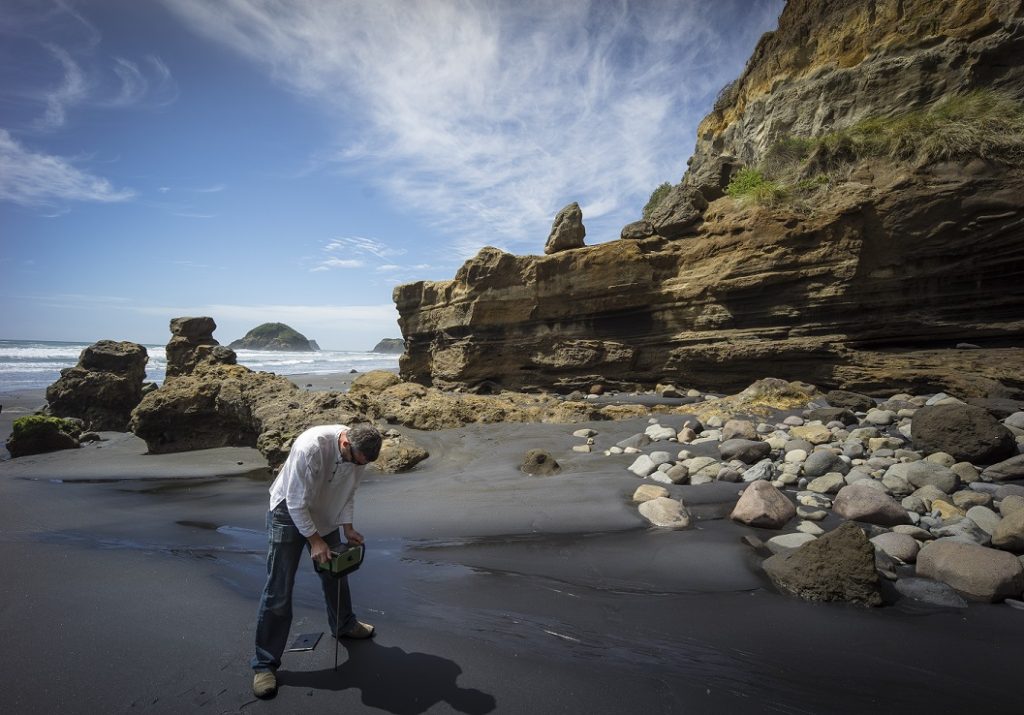

The usefulness of a Penetrologger!

March 30, 2016
There are a number of penetrometer types, dynamic and static and from Van Walt we have offered the cone penetrometers for a number of decades. Thirty years ago our customers were mostly involved in agricultural research and the cone penetrometer was the perfect tool to detect compacted layers.
All those years ago, I remember that most farmers subsoiled routinely prior to cultivation. With time, the cone penetrometers showed that subsoiling could do substantial damage to the soil profile. Too shallow and it would be completely ineffective and too deep the (diesel) costs would rise and the soil profile could be damaged for years to come. The same applied to ploughing and under certain conditions this would lead to a smeared and compacted layer at a depth which could cause waterlogging due to the creation of an impermeable layer and consequent reduction in yields. Nowadays much more care is taken with precious soil profiles and the cone penetrometer was a tool which led farmers to consider a more scientific approach when deciding on subsoiling and cultivation methods.
Cone Penetrometers do today what they did half a century ago; they measure resistance against depth and most were restricted to a maximum depth of 80-100cm. Whereas all units have always been research grade devices with calibration the easiest to read was the Penetrograph, a penetrometer which was able to show the results in a graphical form on plasticised paper. This totally mechanical device is available even today from new but most customers are opting for an electronic version, the Penetrologger. This device can be pre-programmed with location names and a number of penetration recordings per site, so even inexperienced staff can be sent to make the recordings. Data is stored on the internal datalogger with GPS co-ordinates and the data download can take place in the comfort of the office. The software gives averaging functions and resistance measurements can be drilled down to 10mm so that very precise results can be achieved.
One of the more interesting devices is the Penetrologger for top layers. A small handy unit and at one time it was used by the RSPB to determine whether the soil resistance was too high for the beaks of birds to break into the soil during feeding.
Whereas the cone penetrometers were originally designed for agricultural purposes, with time other sectors wanted these small portable units for geotechnical investigations. For a while there was no correlation between cone penetration measurements and California Bearing Ratio (CBR) but in the last years a specially adapted device was manufactured to satisfy those customers who needed to work using the CBR.
Cone penetrometers have also been a great success for research in the suitability and stability of landing strips. In fact, the German Army still use the CBR unit to assess the suitability of older runways to accept heavier modern jet aircraft. Especially compact units were provided so that they could be strapped to the users who would parachute to site.
You might also be interested in...
Van Walt Guidelines for sampling for PFAS in Groundwater
November 13, 2024We need to make clear, that at the time of writing, there are no ISO or EN standards which deal with the sampling of groundwater for PFAS.
Read MoreSpot measurement v. continuous environmental monitoring
August 25, 2023Environmental monitoring has developed considerably over the years. From the time when a consultant went out monthly or quarterly with a dip tape to monitor the groundwater level in a borehole, wind forward...
Read MoreMeasuring Nitrates (NO3, NO3-N) in the field
June 20, 2023The interest in Nitrates is nothing new. One way or another we have been measuring them for half a century.
Read MoreVan Walt Environmental Equipment
A small selection of our environmental equipment